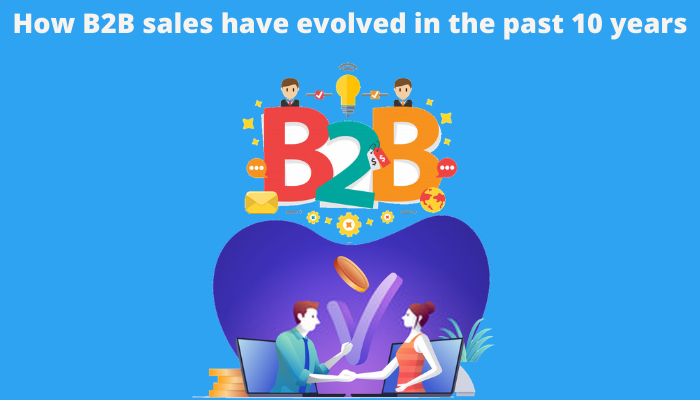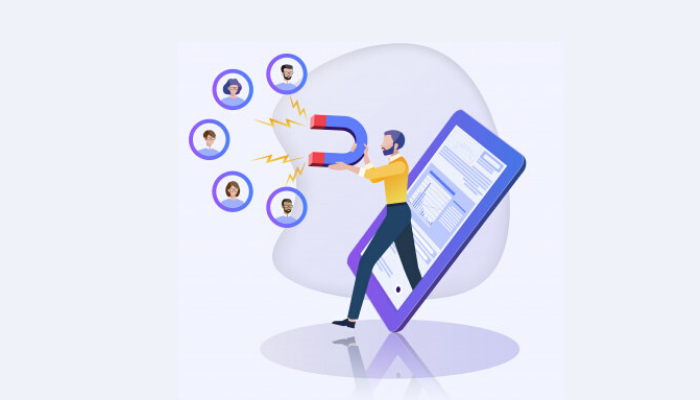Like every other thing, the Internet has also drastically changed the way B2B businesses sell to each other. Change is fuelled by the infusion of technology and digital media at every step. The customers are more informed and educated than they had ever been and like to get substantial customization and personalization.
Gone are the days when the salespeople used to be the primary source of reliable information. There is a great expansion in the way and extent to which the buyers are doing before making their final decision. Plenty of information is available over the Internet and buyers are acquiring this information from multiple sources. Many B2B researchers are millennials and 71% of them begin their research through generic google searches.
Studies have shown that nearly 57% of the buyers make their decision even before the supplier’s sales representative could participate and try to influence. For that reason, the sales team for every business has to adapt to a proactive approach with innovative ideas to reach out to the buyers and build trust among them.
It goes without saying that the efforts need to be over digital platforms to extend to the present-day buyers. The sales team has to come up with more online interactive tools to embellish their relationship with the buyers. These changes have completely transformed the face of b2b sales in the past decade.
Drift in b2b sales trends in the past 10 years
With the beginning of the second decade of this century, the charm of the traditional methods of b2b sales was already at its decline. Methods like cold calling were not giving the expected returns on investment. However, these methods were still extensively used by businesses. Tools like messaging and emails were gaining popularity.
Also Read: 5-Surefire Methods to Boost B2B Leads and sales
Soon businesses started realizing the importance of web searches and social media, a tool that was reconstructing the framework of b2b sales. Customers were approached through social media connections and relative advertisements on their most searched pages. An increasing number of higher authorities were taking purchase calls based on social media referrals. This was the transit phase that did not last for a much longer period.
Within a couple of years, social media became one of the most prominent platforms for b2b sales. The youngsters getting to the important positions to decide the purchases for the businesses were information hungry and started using the Internet as the primary source for research. To accommodate this change sales teams start using digital tools that are faster, interactive, and engaging.
These developments lead to the present-day B2B sales structure where at least half of the B2B buyers are millennials. Instead of reaching out to the customer and intruding their spaces, now the sales teams were drawing in the customers by registering their presence 84% of these young decision-makers use social media to finalize their purchase decision.
Presently, new content/information-rich tools like blogs and educational videos are boundlessly used to attract the customer. For 58% of the B2B buyers, blogs are a vital information source for initial learning. A large number of them also seek to learn from video content. This calls for experts to perform search engine optimization and ensure that your content ranks o47686-2n the top of the searches. The approach calls for a strong integration of b2b sales and marketing. Most of the job is done by the market and the customer is more than 90% convinced before entering the sales funnel.
This modern b2b sales framework has almost changed the trend from an outbound approach to an inbound approach. The companies are giving more emphasis on bringing in the customers to their territory and converting as many as possible.
Outbound vs Inbound
The transformation in b2b sales in the last ten years is extreme. If the two ends of the decades are considered independently, one can easily notice the difference. Let us understand it by comparing the methods used in each approach and the reason for its failure/success in the present day scenario.
◊ Methods
The traditional approach requires the salespeople to connect to the customers through conventional means like cold calling, emails, direct mails, trade shows, and others. It would take several tries for them to make the customer at least hear them out for what they are offering. Those who could convince the customer to lend his/her ears would also get a lukewarm unsure response. With that response, the number of converted customers would be extremely less than those who have been approached.
On the other hand, in the current approach, sales and marketing need to operate in collaboration. The communication is initiated by the customers’ end. They realize the problem and the need for an efficient solution. The search for the solution begins online. Here the B2B leads and marketing team needs to ensure that you are found in the search with a very convincing and easy to access a website. Many tools such as blogs, social media, videos, permission-based emails, and many more can be used to elevate your chances of being found. This encourages the customer to connect to you and ask for details. He/she should receive educational emails detailing what you offer. This builds trust in your brand and increases the chances of conversion multiple folds.
◊ Why one failed and the other worked
The traditional approach is intrusive in nature and often fails to provide a personalized experience to B2B customers. The customers who might have interest do not feel valued and also feel interrupted by constant calls and emails. The method is expensive and most of the time does not yield the desired results. The return on investment is low and you may have to quit if the expenses overrun the budget.
Talking about the modern approach, it intercepts the potential customers instead of interrupting them. As the interaction begins from the customers’ end, they are certainly interested in your products or services. This helps you provide more relevant and helpful information with a greater extent of personalization. With numerous contacts of the customers, you have valuable assets that can be used in the future. The investment is nearly 60% lesser than the conventional method and the returns on investments are higher and continue to grow in most cases.
At this point in time, the B2B market is dominated by young people who like things to run faster and with greater efficiency. They are ready to change to incorporate the evolution of technology to improve and evolve the market. They have brilliant innovative ideas for B2B sales and marketing to take the businesses at the top and maintain their places. While most of the companies have adapted to these changes, there are still a few who deny to cope up with and struggle in this turmoil. These trends have made the market uncertain the graphs are no longer linear. There are turns and twists and they continue to be like that. It is important for businesses to accept the trend and adapt to the transformation.
Also Read: Crafting the Right B2B Sales Process, and B2B Sales Negotiation Mistakes to Avoid
You can have better insight into our services, expertise at what we do and business-ethics by visiting the following links-
| 1. | |
| 2. | |
| 3. | Data Appending Services |
| 4. | Web Scraping Services |
| 5. | Data Verification |
| 6. | Data Scrubbing |
| 7. | Address Search |
| 8. | Email Data Validation |
| 9. | Email Verification |
| 10. | Email Address Validation |



